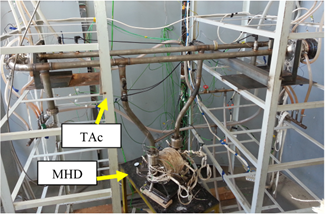
A total of ten PhD students from eight institutions carried out their original research work in the framework of the ESFR-SMART project. The average time required for the thesis completion was just under four and a half years, so PhD activities did considerably benefit from the one-year extension of the project, initially planned to last four years.
Out of the ten theses, four were experimental with a focus on developing experimental methods or facilities, and six were computational with the aim of developing calculation methods and tools. Both types of research required the same time for completion. During their dissertation work, PhD students contributed to at least 35 papers in scientific journals and 41 papers in international conferences. They also contributed to the project deliverables and to reaching the goals of the related project tasks. It is therefore apparent that the project benefited from involving students preparing their doctoral theses. The facilities and calculations of the home institutions were also upgraded.
As an example, Figure 1 illustrates one of the main achievements of the dissertation work performed by Artūrs Brekis from the Institute of Physics of University of Latvia, titled “Magnetohydrodynamic generator driven by a thermoacoustic engine”.

Figure 1. Constructed SpaceTRIPS facility
The doctoral thesis was devoted to a new type of energy converter for Deep Space applications. It consists of a unique alternating current magnetohydrodynamic generator with liquid sodium as a working body, and of a thermoacoustic engine, that drives the generator by forcing the liquid metal to oscillate in the magnetic field.
It was shown that by using the possibilities offered by thermoacoustic technologies, it is possible to obtain a liquid metal vibration-type movement, which is capable of generating consumer-suitable 50 Hz sinusoidal alternating voltage without any mechanical wear or moving parts. Therefore, this facility is characterised as highly reliable and maintenance-free, which is especially important for long-term flights in deep space. The main novelty of this work is that both technologies, the MHD generator and thermoacoustic engine, are coupled in a single device called “SpaceTRIPS”, something that has not been done before anywhere else in the world.
In summary, the support offered by ESFR-SMART to PhD dissertations was beneficial for the project, the students, the home institutions and society. It made it possible to have ten new doctoral graduates, or in other words, ten new professionals with the highest level of academic degree that can be awarded and who can help to meet the challenge of supplying highly skilled experts to industry, research centres or academia. The new PhDs moved to those institutions in a nearly uniform distribution after the thesis completion. Therefore, it would be advisable that future European projects maintain such support to favour crossed educational-research activities.

